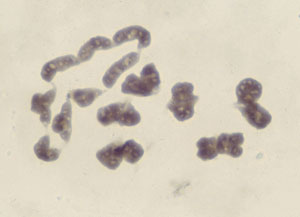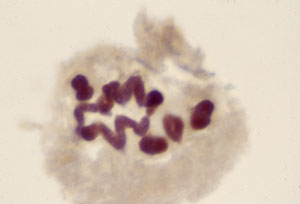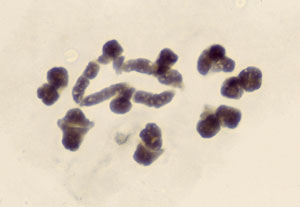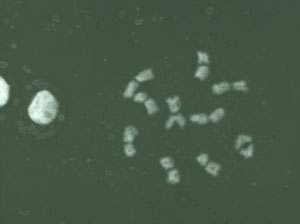Evolution of Dioecy in Viscum
Flowering plants, of course, are fundamentally hermaphrodite, with both female and male organs present and functional in all flowers. Unisexual flowers are produced when either the stamens or ovary are suppressed, and monoecy is the derived state in which separate female and male flowers occur on the one plant. Dioecy is the derived state in which each individual plant in the species population is functionally only either female or male. Monoecy and dioecy have arisen numerous times, in numerous genera, during the course of flowering plant evolution. Dioecy is thought to have arisen as a mechanism which promotes outcrossing in natural populations, thus maximizing genetic recombination.
In the mistletoe genus Viscum (c. 100 species) monoecious species occur throughout the range of the genus except for Europe and temperate Asia. The few species which occur in Indonesia, New Guinea and Australia are all monoecious. Dioecious species are common throughout Africa and Madagascar, and one or two others are widely distributed in Europe and temperate Asia, including the traditional mistletoe, V. album.
There is some evidence that dioecy in flowering plants is due to mutations affecting the hormone systems which control development of the female and male reproductive structures in the flower. If these hormones are different, then the mutations which favour femaleness and maleness would be likely to be non-allelic (i.e., involving different genes). If such genes were not linked, recombination could produce females, males, hermaphrodites and even neuters. Thus the genes for dioecy usually occur on the same chromosome, with no recombination between the female- and male-determining loci, and thus particular chromosomes are identified with sex determination (comparable with the X and Y chromosomes of animals).
Chromosomal studies in Viscum have revealed permanent sex-associated chromosome translocations in the majority of dioecious species. [Translocations involve breakage and reunion of chromosome arms such that the arms are exchanged between different chromosomes]. In these species, male plants consistently show a multivalent ring of chromosomes at meiosis, ranging from a ring of 4 to rings of 6, 8, 10 and even 12 chromosomes (three examples illustrated below). These translocations are not apparent in female plants, which produce only normal bivalents (below bottom right), and they probably have had an essential role in the evolution of dioecy in the genus.
 |
 |
 |
 |
In Viscum the translocations may have brought non-allelic mutant sex factors for femaleness and maleness on different chromosomes into appropriate genetic linkage. Because of the way the translocated chromosomes are inherited, recombination producing hermaphrodites and neuters would be eliminated (see box below). Chromosomal translocations seem to have been the key to establishment and stabilizing of dioecy in Viscum, and to have led to a major cycle of new species evolution and migration in the genus. The advantages of dioecy seem to have been so great that complicated series of chromosomal rearrangements have been utilized in its establishment.
An interesting consequence of the sex-determination system in Viscum is that it appears to have led to permanently biassed sex ratios, which are very rare in nature. [Selection theory argues that in such situations the rarer gender would have a reproductive advantage, so that more of them would survive, thus always leading to a balanced sex ratio.] In the male plants in Viscum the pollen grains would be either female-determining or male-determining, carrying a different set of chromosomes from the translocation complex (see box). Apparently these major chromosomal differences result in the transmission of male-determining pollen grains being lower than that of the female-determining ones, so that there may be up to twice as many female plants as males in the population. Assuming that this ratio still allows female plants to be effectively pollinated, it seems to be a mechanism which maximizes the number of fruit-producing plants in the population, which may be important for bird visitation and seed dispersal.
For a technical model for dioecy in Viscum, |
![An Australian Government Initiative [logo]](/images/austgovt_brown_90px.gif)

